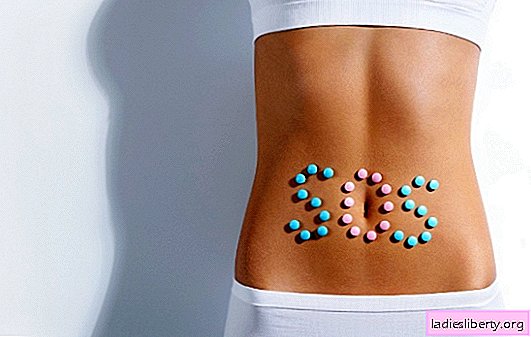
When the time comes to part with impeccable artificial manicure, many women hope to cope on their own without visiting the salon. And this is quite real. The main thing is to observe some rules and then marigold will shine again.
You can start with the fact that for a simple person, not a master, all worries about removing artificial turf can take up to 2 hours. And the rush is unacceptable.
After all, damaging a living nail plate, especially if hastily peeling off an acrylic or gel coating, is very simple. But its restoration will require time and effort.
To approach a manicure that is no longer needed, you should concentrate patience, accuracy and diligence on the upcoming task. And at this stage, regardless of the type of coating, the course and details of the preparation will be exactly the same.
You just need to shorten the tips (plastic plates fixed to your own nails). They do this with the help of manicure scissors or tweezers, it’s very convenient to act with a miniature tool called “boat”, designed just for the correction of artificial nails.
It is important not to cut the synthetic plate too short, under the root and not to exert much effort so that cracks in the natural nail do not form through it.
In addition, work on the creation, correction and removal of artificial nails, as a rule, is accompanied by a certain amount of dust and flying fragments, so experts recommend doing all this by wearing a mask (of those that are worn in a flu epidemic) and special safety glasses (clean plastic )
The removal of this coating is usually carried out in a strictly defined order:
- Using a 100/150 grit abrasive file, remove the topcoat from the entire surface of the nails - to be able to act on acrylic with certain chemical reactions.
- Wet cotton swabs well with a special acrylic remover or just nail polish remover containing acetone.
- Fix the wet pieces on the nails with small squares of foil (for hairdressers or culinary purposes), wrapping the fingertips in a kind of "thimbles". The foil can be replaced with special silicone caps for nails.
- After 20-40 minutes, release your fingers - the acrylic should change, looking like something jelly-like. If there is no effect, re-apply fresh fleece and close your fingers for another 10-15 minutes.
- Finally, it is necessary to work quickly with a softened coating - under the influence of air, acrylic very soon begins to harden.
- Using a pusher or orange stick, carefully remove the acrylic layer, lifting it in the direction from the cuticle to the edge of the plate.
- Remove any remaining coating by washing with a cotton pad moistened with previously used product.
How to remove extension nails (gel) at home
Work with this type of coating also requires a certain sequence:
- Start cutting off the surface of the gel nail with a nail file with an abrasiveness of 80/100 grit.
- To facilitate monitoring of the progress of work, keep a brush (brush) or at least a piece of cloth on hand to brush off the dust that forms.
- After a while, when the coatings have noticeably decreased - change the index of the nail file to 150/180 and continue to delicately grind the artificial manicure.
- It is very important to catch the edge of critical approach to your own nail plate. At the end of the procedure, with the rest of the coating, they work especially carefully.
It is worth noting that the files for the entire procedure should not be made of metal or glass, but of plastic, possibly (the most "delicate") of wood.
And the directions of their movements should lie, ideally, from the cuticle to the edge of the nail and always - strictly in one direction, since waving the nail file in all directions causes the plate to heat.
Many professional masters recommend completing any of the two procedures described above by grinding the nails, for example, using a nail file in 180/240 grit.
Firstly, this will give them a much more aesthetic appearance, and secondly, it will allow to remove the smallest, even the eye, inconspicuous particles of the coating.
But the main thing to keep in mind is that the nail plates, deprived of synthetic jewelry, after they removed the extended nails at home, are sensitive and vulnerable.
And if a quality coating lasts for 2-3 weeks, then the same time interval is recommended to give them a break from this beauty. You can choose ordinary varnishes.
But the first 4-7 days, the nails really need a rest. Maximum - caring, healing nail polish. But before him, they should, figuratively speaking, “breathe”.
No coatings. Only gentle care, consisting in particular of the following:
- bath with sea salt;
- a bath with decoctions of herbs (chamomile - a classic);
- paraffin wraps.
Separately, it is worth mentioning the use of essential, cosmetic oils.
Olive, grape seed, jojoba and almond - are classified as basic.
Essential, added in a few drops (and for the most complete effect it is better in assorted, rather than one for 1 session of care), are selected according to their properties. For example:
- lemon, bergamot and tea tree - to strengthen;
- tea tree - to protect against fungal diseases;
- patchouli, cedar and ylang-ylang - from delamination;
- grapefruit - for whiteness;
- sage, geranium, rosemary - for hydration and growth.
Sometimes good results are achieved by sealing damaged, weakened nails with natural beeswax.
Plus, of course, the use of store-based care products, creams will benefit.
It is also undesirable at this time to expose the nails to aggressive agents and environments, so that household chores (washing dishes, cleaning the floor, washing by hand) and even more so - anything in the garden (in the country) should be handled strictly with gloves on.











